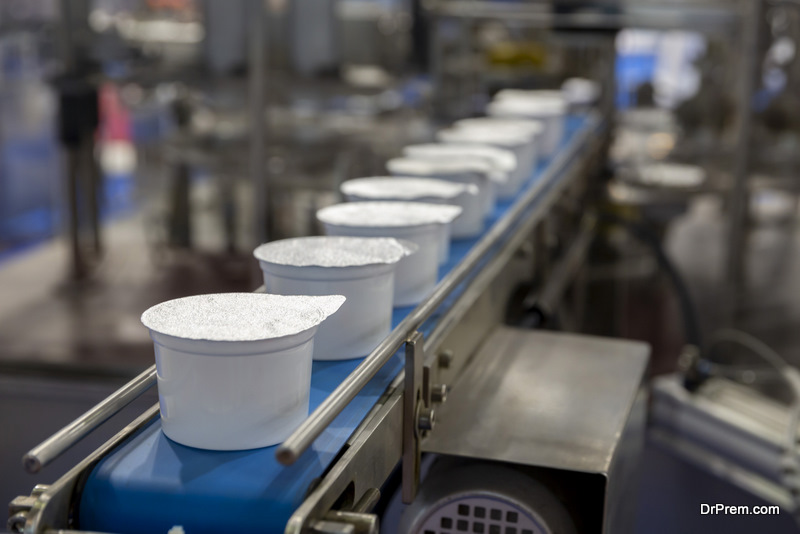Dairy is an important part of our lives, so it’s important that we take a close look at the environmental impacts of the dairy industry. As the demand for dairy around the world increases, the production of dairy farms must also increase. The worry is that this growing demand will cause the environmental impact to become more severe. Many people see dairy farms as a cause for rising greenhouse gas emissions. Is this a legitimate concern or is it being over-exaggerated?
We’re going to look at the facts here and turn to real studies rather than conjecture to see the real environmental impacts of the dairy industry.
1. Dairy’s Negative Environmental Impact
It’s true that dairy cows are the cause of an increase in greenhouse emissions and this is a direct contribution to climate change. But poor handling of manure and fertilizers are a more immediate threat to the environment. Unsustainable practices lead to the loss of wetlands, forests, and prairies. These practices also wreak havoc on local ecosystems.
As we can see, using more sustainable practices will lessen the environmental impact of dairy farms on a smaller scale.
2. Large Dairy Farms Have the Biggest Environmental Impact
When cows graze naturally in large pastures, they are able to feed and return small waste directly to the soil in small quantities. The problems come when cows are shoved together in a close environment. They have to be fed and their waste has to be removed in bulk. This unnatural order has a negative impact on the environment.
Dairy cows release a large amount of methane through belching and flatulence. Methane is far more potent than carbon dioxide. But how much is this impacting the environment? States like California report that 45% of their methane emissions are the result of cows.
Large mega dairy farms also pollute the water due to the incredibly large volumes of manure that’s generated. Cow manure is high in nitrogen. In small natural quantities, it’s a healthy fertilizer, but the problem is that large dairy farms produce tons of it in a confined area. This leads to dangerous runoff that pollutes water supplies.
3. How to Lessen the Impact of Dairy Farms
The key to creating a more environmental friendly diary production chain is to develop a more efficient process. Producing nutrient-dense milk using sustainable practices is the key to lessening the environmental impact. Fortunately, technology has given us access to tools that aid in efficiency.
Genetics Have Improved the Efficiency of Milk Production
Genetic progress over the past decade has vastly improved the production of milk from dairy cows. Farmers are able to breed their cows using the best genetics. As a result, the progress from one generation to the next is much higher than it was in the past.
Better genetics lead to higher milk production. This all comes with fewer resources, fewer cows, and a lower environmental impact.
Animal Welfare and Health have Shown Improvement
Major advancements have been made in veterinary medicine that prevents various sicknesses that have plagued dairy cattle for years. Sick cows don’t produce as much milk and by eliminating these illnesses, the efficiency of milk production is vastly improved. Since fewer cows are required to produce the same amount of milk, the environmental impact is lessened.
We also have the technology available to improve cows’ quality of life. Making use of a cow scratcher, for example, has proven to improve a cow’s comfort and increase milk production. So, this is also another way that we’re able to lessen the impact of dairy cows on the environment.
Feeding is More Efficient than Ever
Through vigorous research and numerous studies, the National Research Council has laid out a feeding plan that promotes higher milk production for the minimum amount of feed. This creates a more sustainable dairy practice. Since cows are able to produce more milk under this diet, we require fewer in order to meet society’s dairy demand.
In short, we have two metrics to use here. The first is the baseline of nutrients that is required for a cow to survive. This is put to use during off seasons when they are not producing milk. The second metric is the nutrients required for a cow to produce the most milk. In order to produce the maximum amount of milk, a cow must be fed the right nutrients. Having the baseline makes sure farmers are able to achieve this feat without overfeeding them.
Global Impact of Dairy on the Environment
So far, we’ve looked at the dairy industry from the perspective of the United States. Looking at dairy production from a worldwide perspective, the environmental impact is even harsher. For instance, India is the largest producer of milk in the world but their approach is not as efficient as the US. It takes four Indian cows to produce the same amount of milk as one US cow.
We can see that the global impact of dairy on the environment is a legitimate concern. Other major producers like China are making progress in dairy efficiency.
The environmental impacts of the dairy industry are seen globally but advancements are being made to meet the challenge. For the sake of our environment, it’s up to everyone to adapt to these advancements.
Article Submitted By Community Writer




